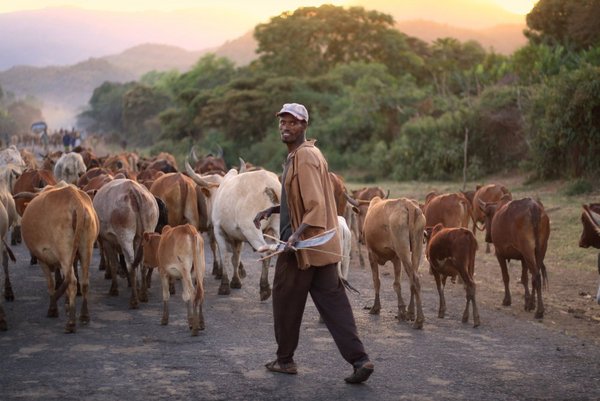 Read this article in French
Read this article in French- Share this article
- Subscribe to our newsletter
Unequal investment distribution in One Health Networks
Since the term One Health emerged in the early 2000s, efforts to operationalise a One Health approach at global, regional, and national levels have increased. Governments, academic institutions and non-government organisations have implemented a One Health ethos and formalised these commitments to cross-sectoral and intersectoral collaborations through One Health platforms, networks, steering committees and task forces.
A One Health approach to disease prevention and control recognises the close interaction between people, animals and their shared environment.
The COVID-19 pandemic has seen increased focus on the threat of emerging diseases at the human–animal–environment interface.
As such, investments in One Health collaborations are expected to increase at local, national and international levels in order to effectively tackle emerging, re-emerging and endemic diseases.
Analysis of the operations of global One Health Networks is useful to assess their efficiency, avoid duplication of effort, and ensure appropriate and timely allocation of resources.
A recent research study by Athman Mwatondo and colleagues at the International Livestock Research Institute (ILRI) in Nairobi, Kenya, found that more One Health Networks are formed and headquartered in Europe than in any other region. The study was published in the scientific journal The Lancet in February.
According to the study, emerging infections and novel pathogens were the priority focus area for most One Health Networks, with fewer networks focusing on other important hazards and pressing threats to health security.
Imbalances in One Health Network priorities and investments
With regard to One Health collaborations, the study found low diversity in stakeholder and sector representation.
This, the study authors argue, is an impediment to effective and equitable One Health Network formation and contributes to other imbalances in network priorities and investments.
The study therefore calls for the development of a database or repository of One Health Networks world-wide. This will facilitate greater understanding of the existing resource allocation and distribution patterns among global One Health Networks and thus ensure more focused efforts and equitable resource allocation to the networks and communities that need them most.
(ILRI/wi)
Reference:Mwatondo, A., Rahman-Shepherd, A., Hollmann, L., Chiossi, S., Maina, J., Kurup, K.K., Hassan, O.A., Coates, B., Khan, M., Spencer, J., Mutono, N., Thumbi, S.M., Muturi, M., Mutunga, M., Arruda, L.B., Akhbari, M., Ettehad, D., Ntoumi, F., Scott, T.P., Nel, L.H., Ellis-Iversen, J., Sönksen, U.W., Onyango, D., Ismail, Z., Simachew, K., Wolking, D., Kazwala, R., Sijali, Z., Bett, B., Heymann, D., Kock, R., Zumla, A. and Dar, O. 2023. A global analysis of One Health Networks and the proliferation of One Health collaborations. Lancet 401(10376): 605–616. DOI: https://doi.org/10.1016/S0140-6736(22)01596-3





Add a comment
Comments :